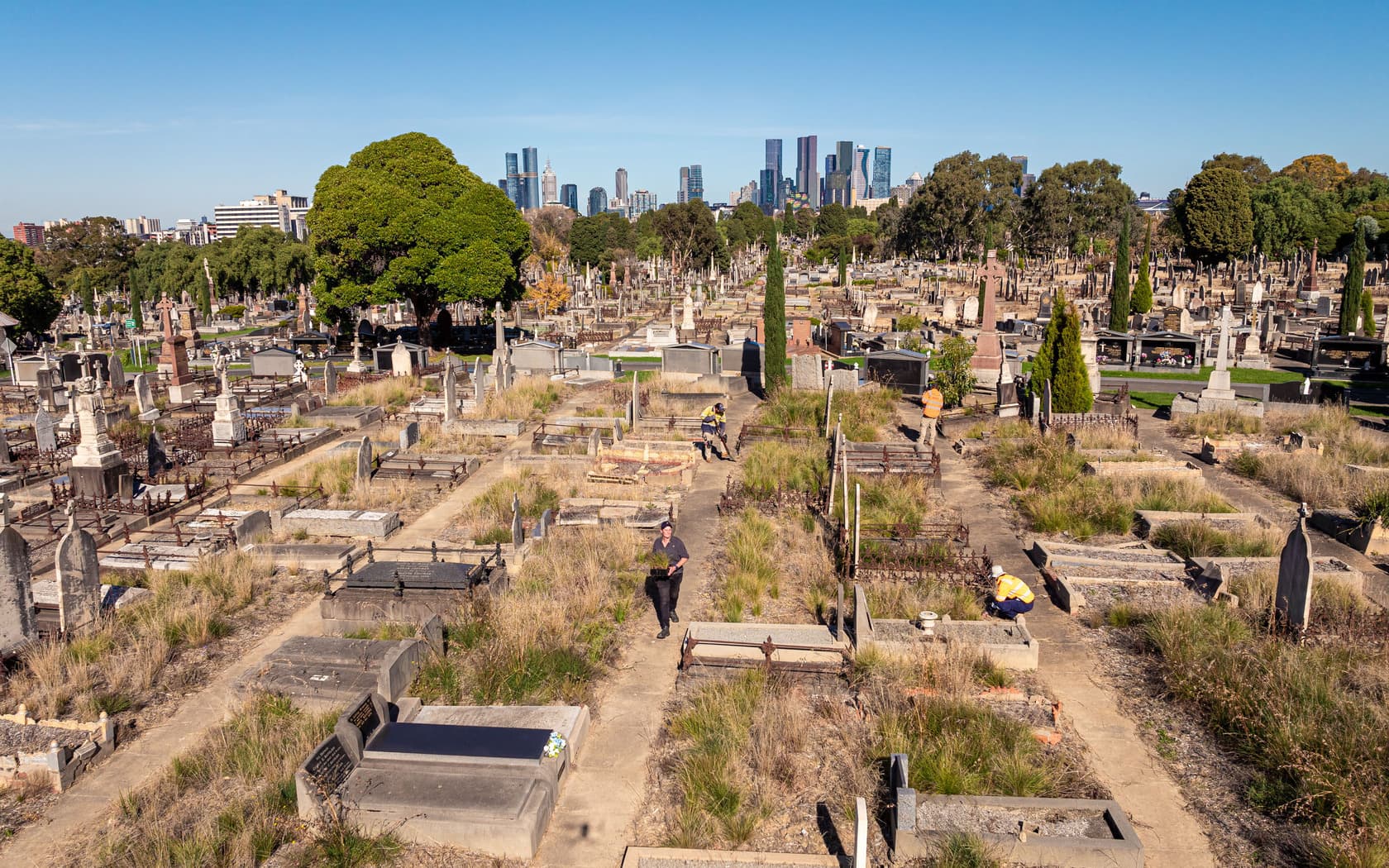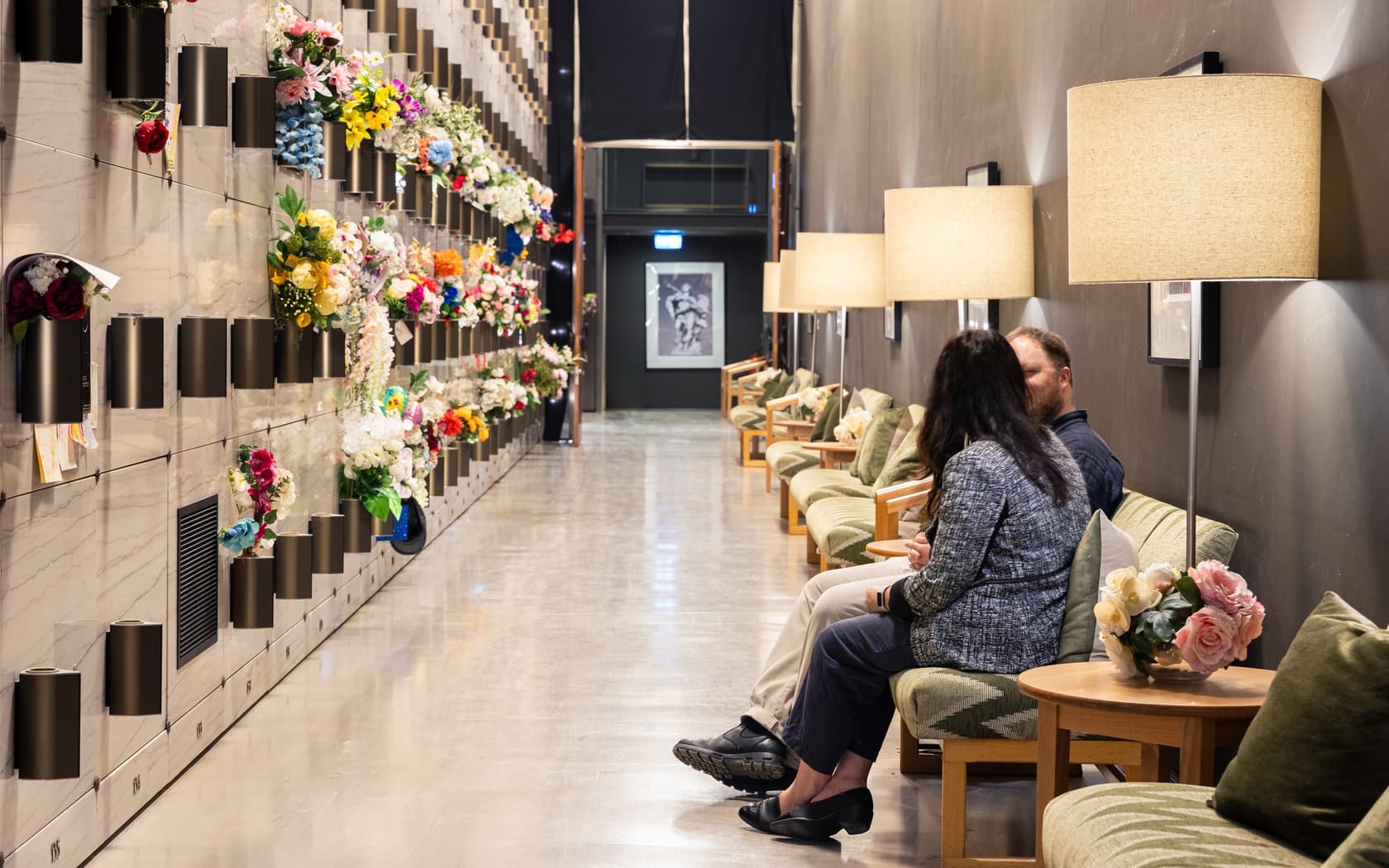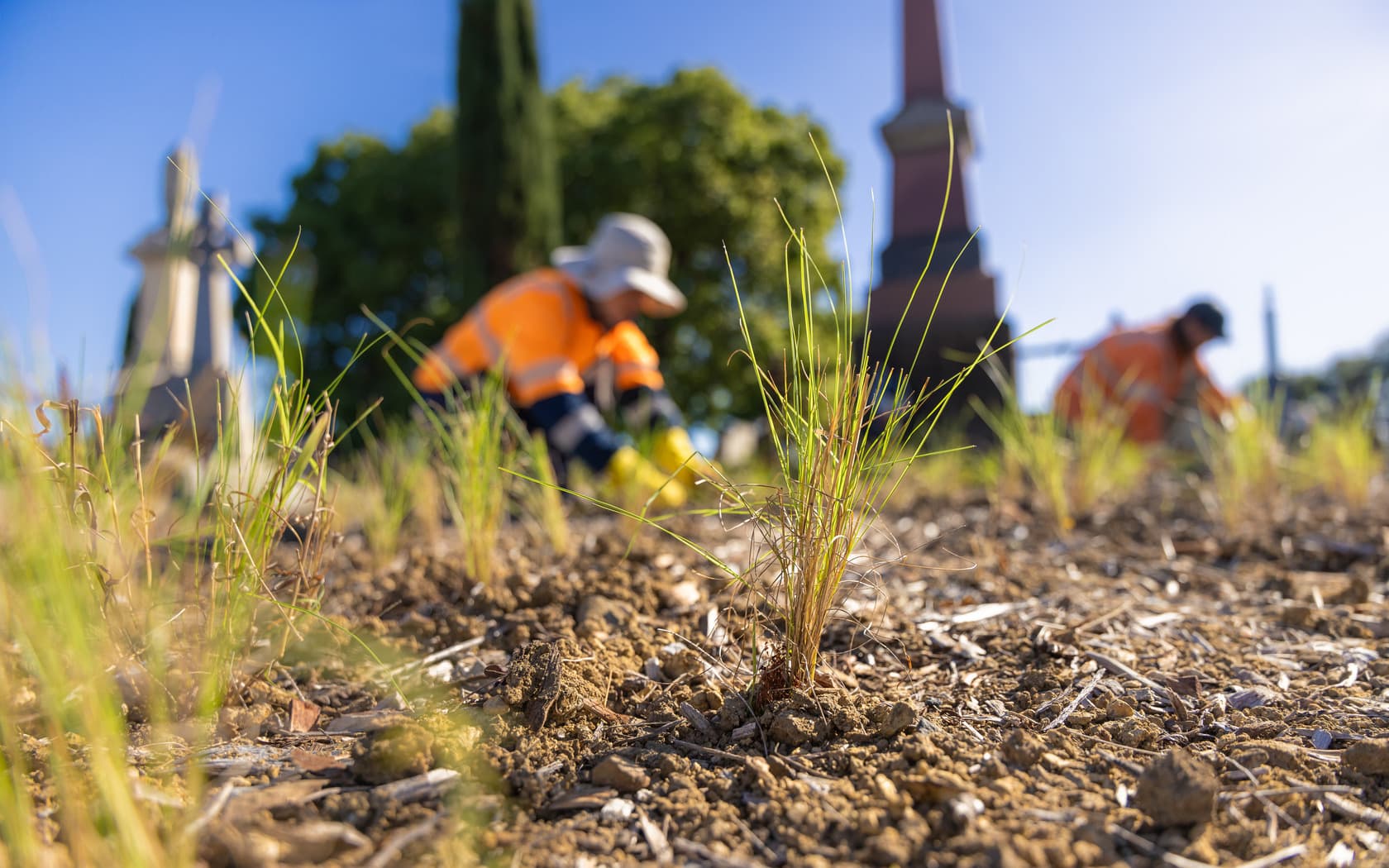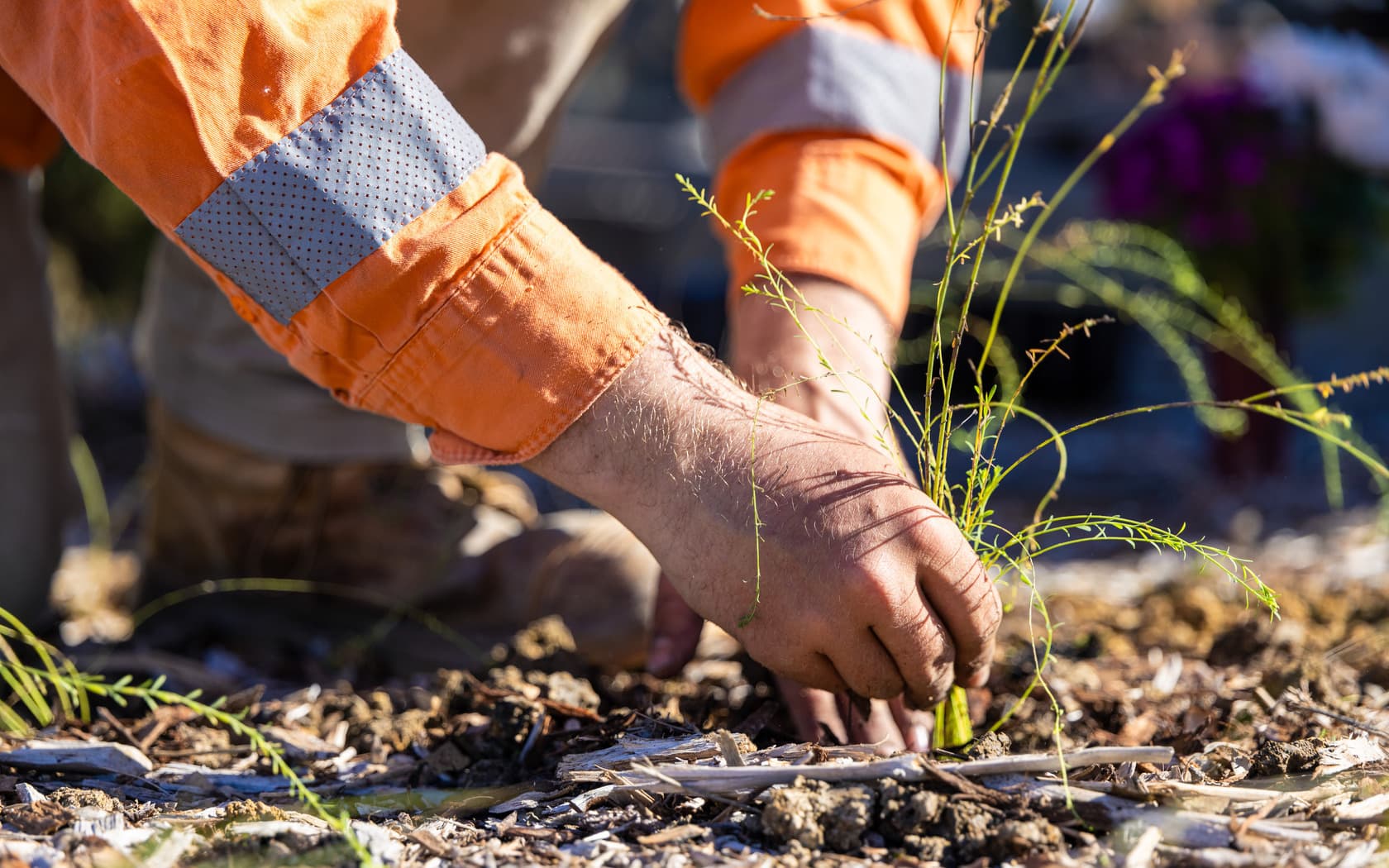
Melbourne General Cemetery
The first Victorian cemetery designed as a public park, known for its central location, notable interments, heritage-listed Gate House, and Prime Ministers’ Garden.
- Melbourne General Cemetery
- 1300 466 904
- Site open daily 8am to 6pm (8pm during daylight savings); Customer Service Centre: Mon - Fri, 9:00 am to 4:00 pm - closed Public Holidays.
Welcome to Melbourne General Cemetery
Established in 1852, Melbourne General Cemetery was the first Victorian cemetery designed as a large public park. Characterised by its central location, notable interments, heritage-listed Gate House and Prime Ministers’ Garden, it is a popular destination for many of the city’s visitors.
Project Cultivate, horticultural works aimed at enhancing the natural landscapes of our historical cemetery sites, commenced in May 2023. It won the 2024 Tidy Cities Sustainability Award. Over 250,000 plants have been added so far in the first two phases of the project.
Melbourne General Cemetery Pricing Brochure
Melbourne General Cemetery Pricing BrochureDownload the fees brochure for more information on pricing and packaging options at Melbourne General Cemetery.
Browse available options
Browse available optionsBrowse available grave and cremation positions online.
Book an appointment
Book an appointmentLimited grave and cremation positions are available for purchase. Book an appointment now for more details.
Location
College Crescent, Parkville, VIC 3052
The main cemetery entrance is via College Crescent, with alternative access available from Macpherson Street.
Located a short tram ride and 3km from Melbourne CBD.
Memorial areas
Melbourne General Cemetery features a variety of memorial areas, each offering unique options for burial, cremation, and mausoleum.

Saint Michael the Archangel
- Melbourne General Cemetery
Architecturally designed and featuring a specially commissioned statue of Saint Michael the Archangel, it is the only double-storey mausoleum built by the Southern Metropolitan Cemeteries Trust.

St Mary of the Cross Mausoleum
- Melbourne General Cemetery
Discover comfort and style in Melbourne General Cemetery's only underground mausoleum. Welcome to St Mary of the Cross.
Photo Gallery
Explore a collection of stunning images showcasing our different memorial areas. Each photograph tells a story of peace, reflection, and remembrance, offering a glimpse into the serene environment we provide for honouring your loved ones.






Melbourne General Cemetery History
Officialy opened in 1853, Melbourne General Cemetery is a significant Australian cemetery designed by Albert Purchas.
Closed for new burials in 1904, it reopened in 1927 and expanded in 1933. The oldest buildings are the Jewish chapel (1854) and the Catholic mortuary chapel (1870s-1880s).
Covering 43 hectares, it has about 300,000 burials and three mausolea from the 1990s. It hosts many notable interments, reflecting Melbourne's historical prominence.
Melbourne General Cemetery History
Notable Interments
- Governor-General: Sir Isaac Isaacs
- Prime Ministers: Sir Robert Menzies, Sir John Gorton, James Scullin
- Governors: Sir Charles Hotham
- Premiers: Duncan Gillies, JG Francis, Sir John O’Shanassy, James Service, James Patterson
- Explorers: Burke and Wills
- Aboriginal Chief: Derrimut (Bunurong tribe)
- Philanthropist: Lady Janet Clarke
- Restaurateur: Mietta O’Donnell
- Billiards Player: Walter Lindrum
- Musician: Greg Ham (Men at Work)
The cemetery also features memorials like the tribute to Elvis Presley and Walter Lindrum’s billiard table monument.
Need support with planning?
If you need support with choosing memorialisation options, flower arrangements, or function rooms, we’re here to help.
Our Customer Service Centre is open Mon – Fri: 9:00 am to 4:00 pm (Closed Public Holidays).

Recommended articles

Important notice for families: Melbourne General Cemetery records requests
- 21 November 2024
It's best to plan ahead for your visit to avoid unwanted delays. This information explains how to prepare for your cemetery visit ahead of time.

Celebrating Project Cultivate
- Melbourne General Cemetery
Since launching in early 2023, Project Cultivate aims to improve visitor experiences while enhancing the natural environment of our historical cemetery sites.

Award-winning Project Cultivate levels up with City of Melbourne partnership
- 11 February 2025
The Southern Metropolitan Cemeteries Trust (SMCT) is excited to announce our partnership with the City of Melbourne to deliver the final phase of Project Cultivate. The funding will help complete our successful initiative to enhance and restore a more biodiverse, natural and sustainable environment at Melbourne General Cemetery (MGC).
- Project